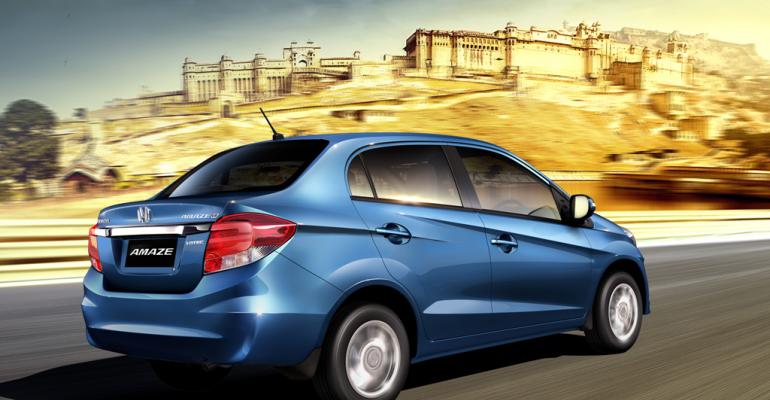MUMBAI – Sales of diesel-powered light vehicles in India appear to be headed full circle as they follow fuel prices largely influenced by government policies.
Industry figures show diesels comprised 35% of the country’s LV market in 2007, peaked at 58% in 2013 and stood at 53% through August of this year. But their share is expected to fall back to 35% by 2016.
Fuel prices are not the only consideration for Indian car buyers. Preferences also have been shaped by the cost of diesel vs. gasoline-powered vehicles, their relative fuel efficiency and resale value.
Relatively inexpensive diesel fuel, long subsidized by the government for bus and commercial-vehicle use, in the last decade attracted automakers such as Tata and Mahindra & Mahindra, which developed entire diesel portfolios.
The subsidized diesel price at the pump was 37% lower than gasoline in 2007. The difference increased to 52% by 2012, and diesel-vehicle sales rose correspondingly. But in late 2012 the government suddenly increased diesel prices 12%, saying the subsidies were increasing both deficits and inflation.
The government deregulated gasoline prices in 2010 and diesel in October, leaving oil companies free to set their own prices. Diesel now costs just 17% less than gasoline – Rs53 ($3.50) per liter for diesel and Rs64 ($4.20 for gasoline).
In addition to the pump-price advantage, advances in diesel-engine technology made them smaller, more powerful, more efficient and almost as quiet as gasoline powerplants. Diesels such as the 1.2L and 1.6L engines made by Fiat and others penetrated the mainstream market of hatchback and compact vehicles. Indeed, Fiat India survives not by selling vehicles but by manufacturing engines, primarily for Maruti Suzuki and Tata.
But diesel vehicles also increased automakers’ costs, as they had to devise ways to suppress both noise and vibration.
Diesel-powered light vehicles also achieve fuel efficiency of 47.0-61.2 mpg (5.0-3.8 L/100 km), some 15% to 30% better than 37.6-44.7 mpg (6.3-5.3 L/100 km) for gasoline. But these figures are reached on test tracks, not on congested, sometimes-chaotic urban and intercity roads that can cut fuel-efficiency ratings in half.
Resale value, however, created the largest demand for diesels. Although their sticker prices have run 20%-30% higher than those of gasoline vehicles, diesels on the road four to five years have commanded 30%-40% more at resale, but that benefit is diminishing.
Jnaneshwar Sen, senior vice president-Honda Cars India, has said that between changing prices and cost factors it will take 14 years for gasoline- and diesel-vehicle sales to be divided evenly.
Six Indian automakers are major producers of diesel vehicles. Tata, Mahindra, Toyota Kirloskar, Nissan, Ford and Renault offer 80 models and variants with gasoline engines, but 173 with diesels.
In comparison Maruti Suzuki, Hyundai, Honda and Datsun offer 130 gasoline models compared with only 58 diesels. Honda’s first diesel model in India, the Amaze, accounted for 82% of sales when it launched in 2012, but diesels’ share has fallen to 60% for the model.
General Motors, Fiat, Skoda and Volkswagen offer roughly equal numbers of gasoline (55) and diesel (58) models combined.
Among the super-luxury automakers, Audi, BMW, Mercedes, Rolls-Royce and Jaguar Land Rover offer a total of 88 diesels and 62 gasoline models, while Aston Martin, Porsche and Mini offer just five diesels against 44 gasoline models. Bentley’s portfolio consists of 11 gasoline vehicles.





